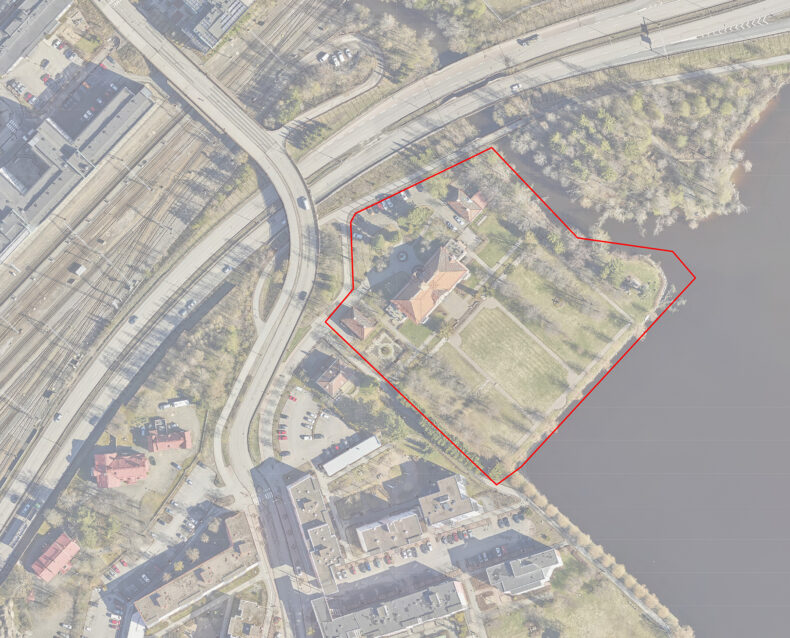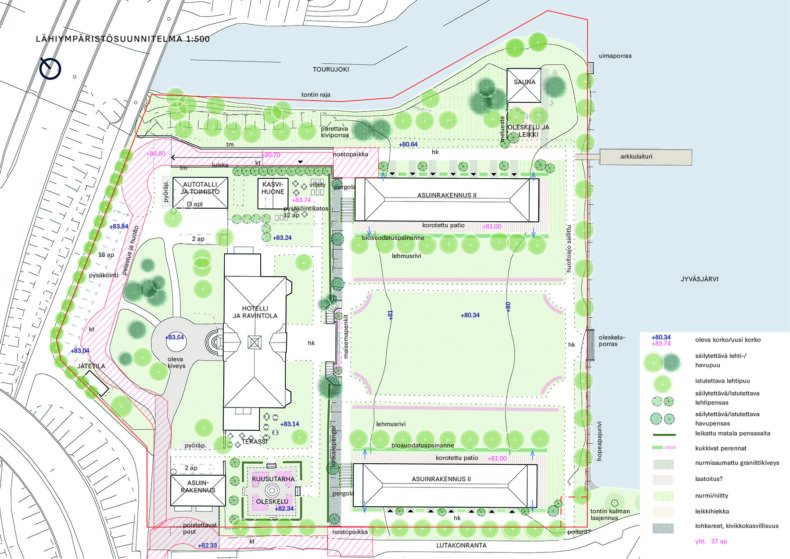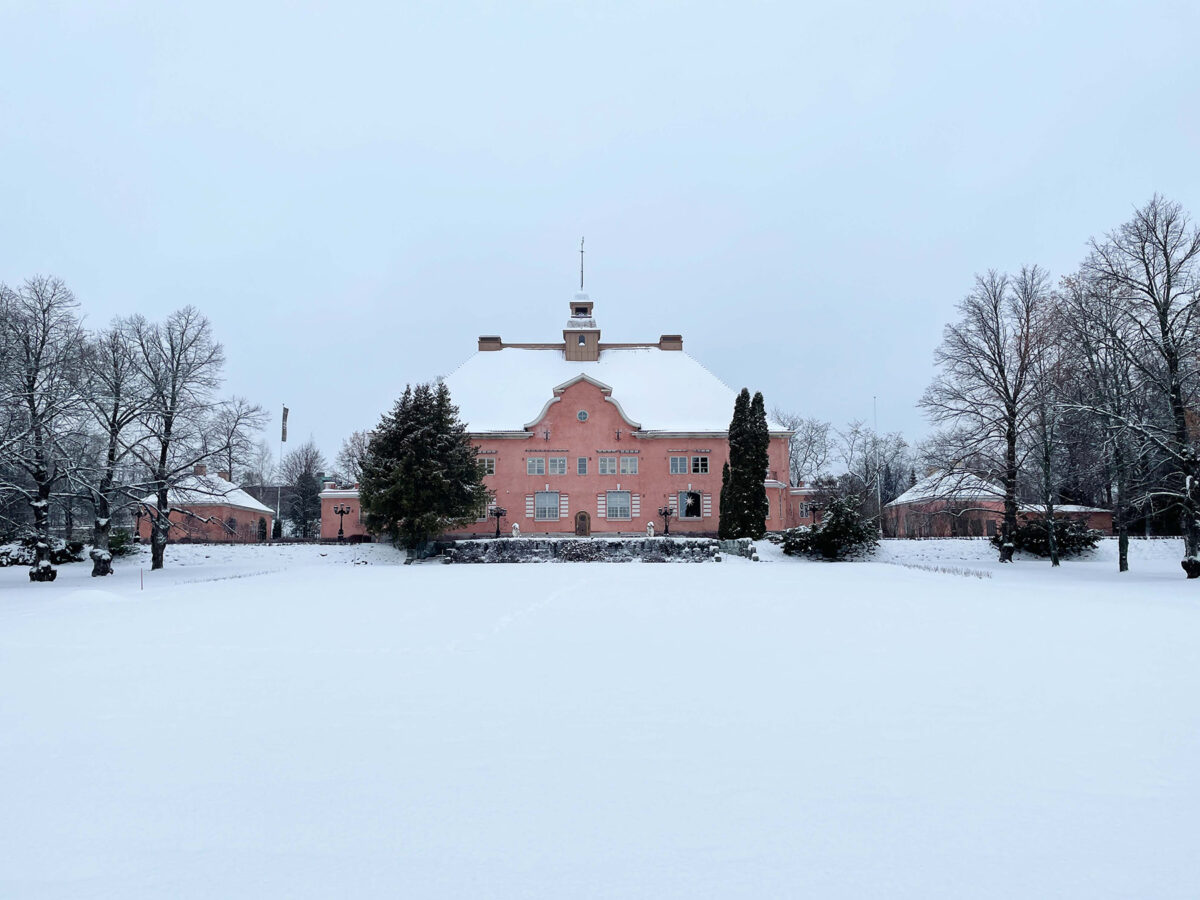Location: Jyväskylä
Type: Garden historical study, landscape plan for zoning phase
Year: 2022
Collaborators: AOR arkkitehdit
The Schauman Castle, situated in Lutakko Jyväskylä, is an integral part of city’s industrial past. To support the zoning process of the cultural heritage site Nomaji conducted a garden historical study and later a landscape plan for the site. The landscape plan was made simultaneously with an architectural reference plan by AOR architects.
The Schauman Castle, served as an official residency of the former sawmill factory’s manager and their family. Manor houses of higher officials were an integral part of the early industrial communities formed around factories in the end of the 19th century and beginning of the 20th century Finland.
One of the most influential Finnish garden designer of the era, Bengt Schalin, drew the original plan for the garden. Even though the garden was not built exactly by the plan, it still expressed Schalin’s formal style. In addition to the formal garden next to the manor house, the property included wide vegetable garden and a heated greenhouse which have been demolished today. The remaining parts of the garden are situated next to the manor house. Natural stone structures, remnants of the rose garden and linen tree alleys are examples of the preserved qualities of the garden.

In an ongoing zoning process, the purpose of the building is proposed to be changed to enable hotel and restaurant services in the manor house. In addition, the new zoning plan would enable building a warehouse, a sauna and two residential buildings on the site.
The landscape plan helps to define the environmental restrictions for the new zoning plan. It investigates possible planning solutions that enable high quality construction and respect the historical characteristics of the place. The premise of the landscape plan was to preserve as much as possible of the historical value of the site.
New construction in cultural heritage sites very often require compromises between preservation of historical values and fulfilling the new building standards. In some cases, the loss of historical value can be compensated by including elements of the historical characteristics into the new design. The new construction around the Schauman Castle inevitably diminishes the historical value of the garden. On the other hand, opening the garden and the manor house for public can enhance knowledge about the role of the Schauman Castle as part of the industrial past of Jyväskylä.

